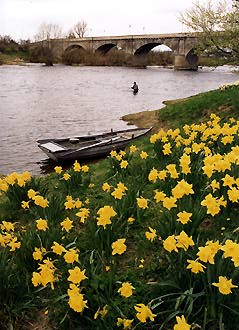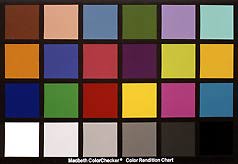
What Fred doesn't have, however, is a bag full of film which comes in exquisite reflective foil gold inner wraps. This is just one of the advantages, for the working professional, of using a film which is generally not sold by retailers, not used by amateurs and unknown to the public.
Ektacolor Pro Gold 160 is manufactured, packaged and even named for an exclusively trade and professional user-base. The Ektacolor name indicates that is a professional film needing refrigeration prior to use, and processing within a few days of exposure for optimum results. The Pro is to remind dealers not to stock this film :-). Gold indicates that the color balance and saturation are intended to be warmer and brighter than standard Vericolor III Type S, the mainstream 160-speed color negative which has dead neutral rendering.
160 indicates the speed, which is peculiarly favored by social photographers for no good reason whatsoever. It seems that wedding photographers, in particular, never believe a film speed marked on the box. They expect to buy a 160 speed film and use it more or less as a 100. Fortunately, there are few studio portraits or bridal shots which don't benefit from a half-stop or so extra exposure in the skin tones.
So, how did it do? We tested some 35mm and 120. A roll processed by a local minilab was pretty ordinary. They clearly didn't have a special channel for it, and used on flash snaps it had nothing special to offer. Rolls processed by Warrens of Leeds, one of the UK's best all-round labs, were five hundred percent better. Outdoor shots (below) were bang on - greens, yellows, reds, stone, sky, water all rendered perfectly.

The film comes into its own for studio shots. Skin tones are warm towards pink, not golden tan, and in this respect Ektacolor competes head-on with the increasingly popular color gamut of Fujicolor NPS. Contrast is a little high (Gold films tend to be this way) but not harsh, just bright. This is a film for weddings in soft light, not those difficult ones in brilliant sunshine.

The negatives produced were very full; the 160 speed is entirely realistic and there is no need to treat this film as a 125 or 100. If anything, it can take slight underexposure. Dense negs print well, retaining good flesh color. Grain is exceptionally fine; frankly, films in this category have now advanced so much that if you reckoned 6 x 7cm essential for a good 20 x 24" enlargement two years ago, you should be happy to pull the same size out of 6 x 4.5cm today.
It's a pity that the Almighty can't arrange a global reduction in the size of dust, scratches, hairs, fingerprints and waterborne scum to match the improvements we now are seeing in sharpness and grain.
Our scans here are from the Nikon ScanTouch, which produces a very neutral rendering. The studio portrait of Debbie is shown on the previous page. The shot of daffodils and a fisherman in the Tweed by Kelso Bridge, a couple of minutes from our office door, was taken by Andy Aitken on an elderly Pentax.